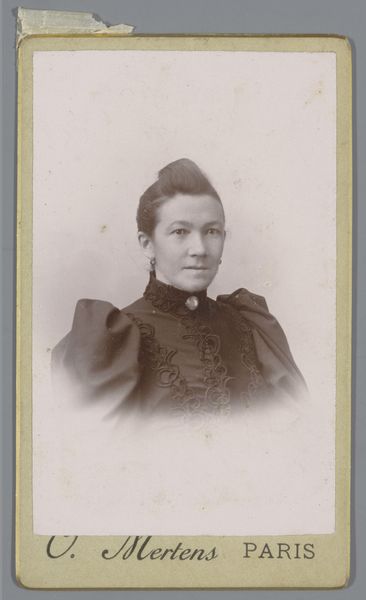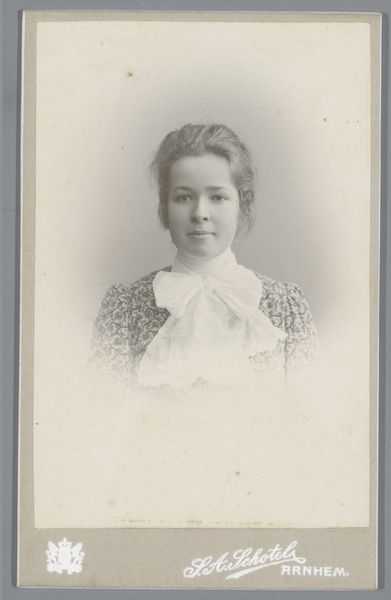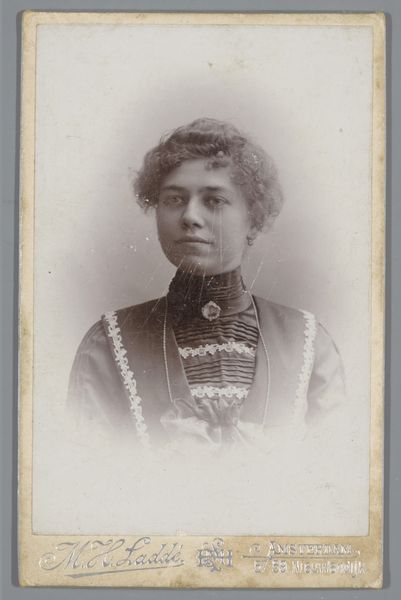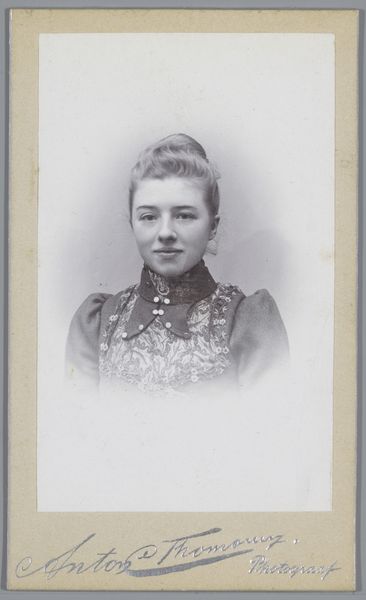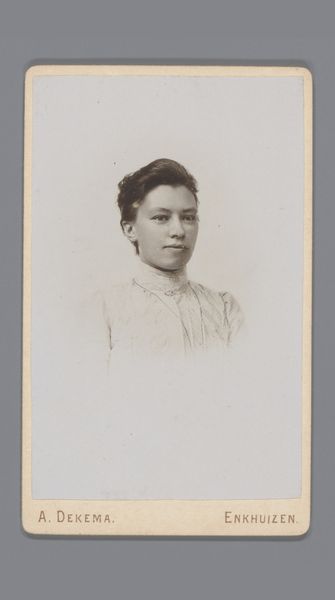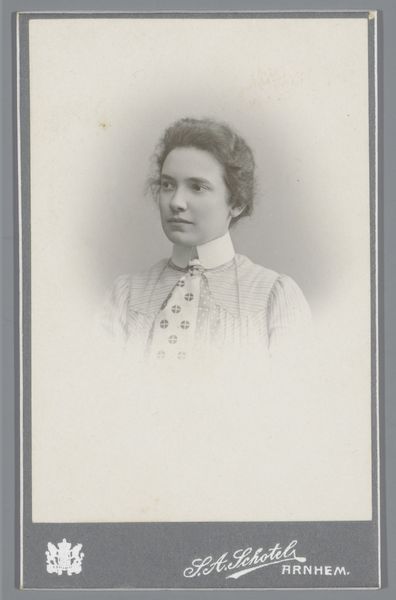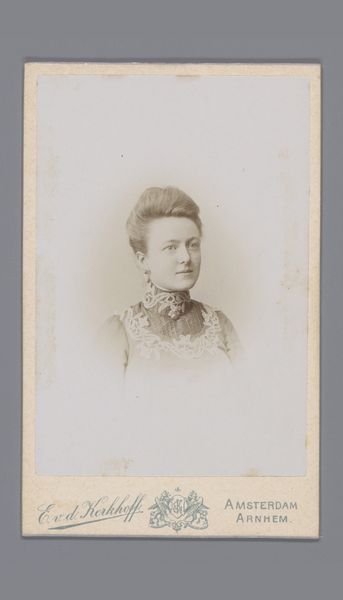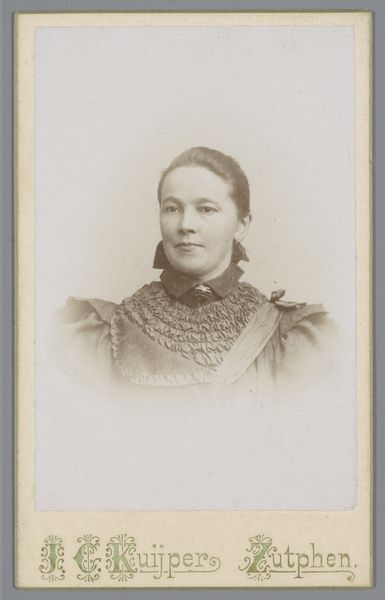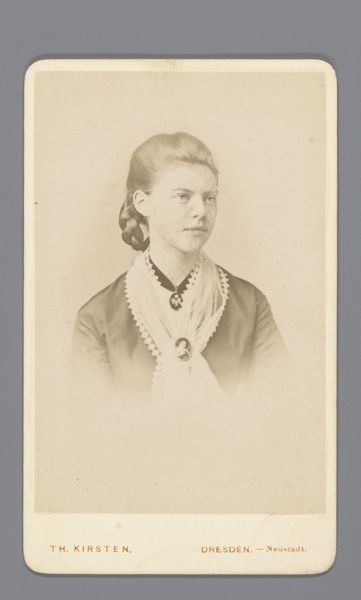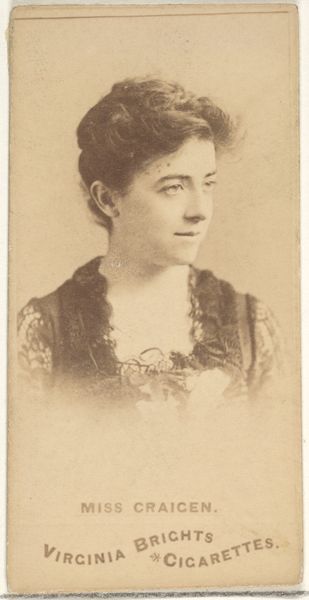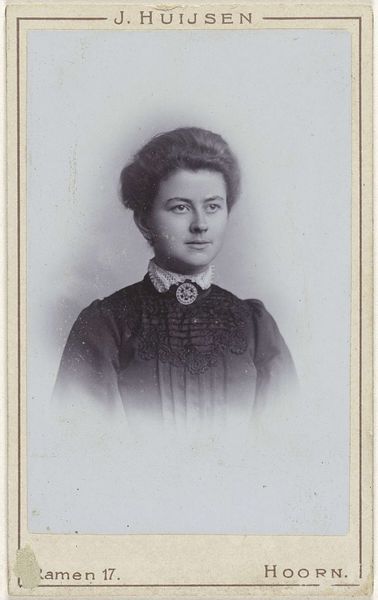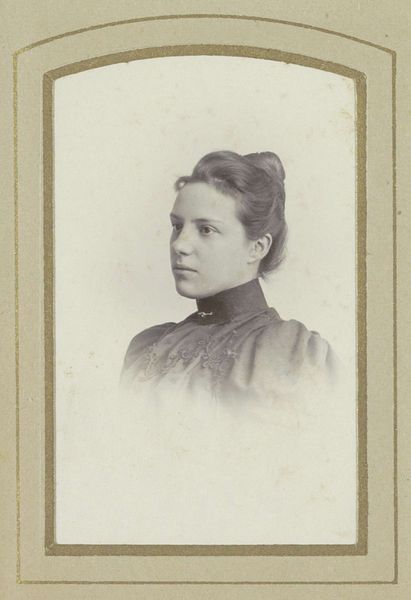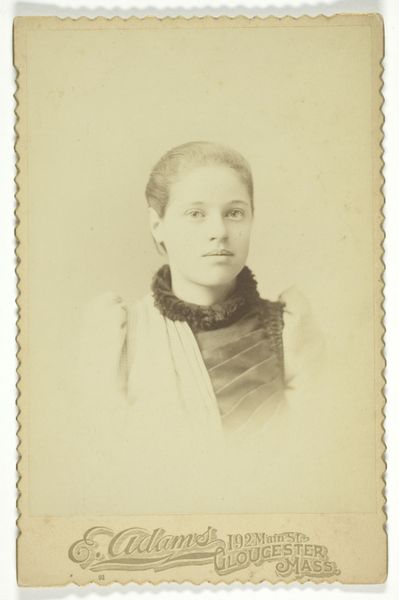
Studioportret van een vrouw in zwarte jurk met wit kanten kraag c. 1890 - 1915
0:00
0:00
henridelouw
Rijksmuseum
photography, gelatin-silver-print
#
portrait
#
photography
#
gelatin-silver-print
#
realism
Dimensions: height 136 mm, width 97 mm, height 162 mm, width 105 mm
Copyright: Rijks Museum: Open Domain
Curator: This striking photographic portrait, tentatively dated between 1890 and 1915, comes to us from the Rijksmuseum. The work, a gelatin-silver print, is simply known as "Studioportret van een vrouw in zwarte jurk met wit kanten kraag" or, "Studio Portrait of a Woman in a Black Dress with a White Lace Collar," created by Henri de Louw. Editor: There's a certain stoicism to her expression, a somberness perhaps intensified by the limited tonal range of the photograph. Her dark dress almost dissolves into the background, making the intricate white lace collar a visual focal point. Curator: Absolutely, and the collar, that bright lace against the dark fabric, really is evocative of a societal push and pull of tradition and modernity. That rigid, high collar and the somber black—Victorian mourning, perhaps. The white lace softens it, hints at delicate artistry, domesticity. It suggests a complex emotional landscape hidden beneath the surface. Editor: Agreed, clothing in portraits from this period, particularly the white lace collar, became increasingly important for revealing an elevated social standing of a sitter. Moreover, portrait photography allowed the middle classes a more attainable mode of commemoration. Do you think this reflects the burgeoning visibility of women in public life? Curator: I find myself captivated by her gaze. It’s direct, challenging. We are so conditioned to read Victorian-era women as passive and delicate, but this feels…different. Look closely at the soft way the light catches the curve of her cheek and jawline and pools into her eyes—all rendered by de Louw’s deliberate photographic choices, reflecting a determined woman. Editor: Well, I wonder about photographic realism’s promise to document sitters as they appear while creating visual statements that project an aesthetic code and class performance for posterity. While offering us a lens to explore social status and self-representation, it leaves a significant portion of this woman's identity, the inner personhood, out of view. Curator: That is a compelling reading of it, considering the context. Overall, what stays with me is the intimate feel—it invites us to project our own contemporary concerns about personhood, and even identity, onto this long-ago moment. Editor: For me, reflecting on how these images construct historical memory is essential. This photograph captures not just an individual, but a moment in societal transformation.
Comments
No comments
Be the first to comment and join the conversation on the ultimate creative platform.
